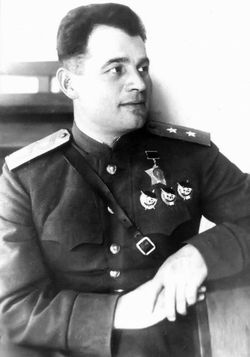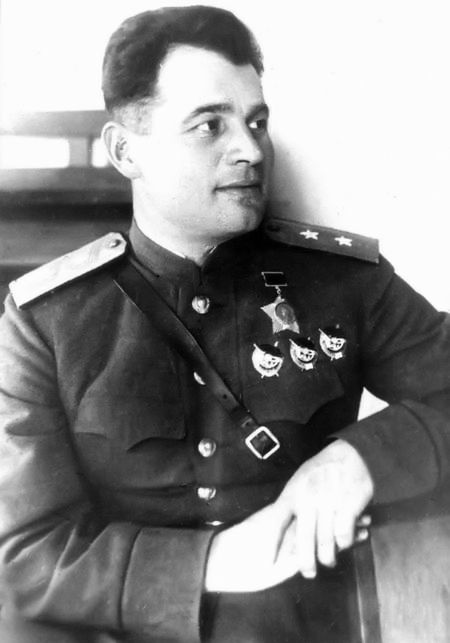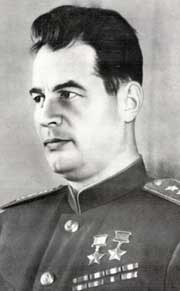The offensive pressed on to Baranavichy (8 July) and to Hrodna (13 July). In the south Rokossovsky cleared the Pripet Marshes taking Pinsk and Kovel on 5 July. In the north Bagramyan turned to the Baltic States and took Vilnius in Lithuania and Daugavpils in Latvia on 13 July. This split the Army Group North in two (East Prussia and the Baltic States). The Soviets arrived on the Polish border within 24 days and claimed to had taken 158,000 men, 2,000 tanks, 10,000 guns, and 57,000 motor vehicles. They also claimed to have killed 38,000 Germans. It was a resounding defeat for the Germans and Hitler dismissed Busch from the command of Army Group Centre, replacing him with Model. The Soviets had swept the Germans from Belorussia by mid-July 1944 and they pressed their advantage by attacking Poland. In the north Generals Chernyakhovsky and Zakharov joined to take Bialystok on 18 July. In summer 1944 General Chernyakhovsky pressed the Germans on the frontiers of their own land in East Prussia. His 3rd Belorussian Front drove across the Neman River, taking Kaunas on 1 August, and pressed the eastern border of East Prussia. The center thrust took Suwalki on July 26 and General Bagramyan occupied the Tukums junction on the Gulf of Riga. Prior to his death in 1945, Chernyakhovsky launched the Soviet East Prussian Offensive against stiff resistance from the III Panzer Army. He was part of the drive on Berlin. Together with Marshal Konstantin Rokossovsky's 2nd Belorussian Front, which attacked East Prussia from the south and then headed north-westwards towards the Baltic coast around Danzig (Gdansk), the 3rd Belorussian Front, commanded by General Chernyakhovsky was ordered to attack from the east towards Königsberg, even though this meant throwing his armies against heavy German defence works. These two fronts mustered 1,670,000 men with 28,360 guns and heavy mortars and 3,300 tanks. Marshal Rokossovsky's front made contact with Marshal Zhukov's forces at Grudziadz (German: Graudenz) and they wheeled north towards Danzig to cut off East Prussia. More than 500,000 Germans were caught in a pocket, but many were evacuated. On 10 February, Rokossovsky reached the coast near Elbing (Elbląg) and East Prussia was under siege from the south and east by the 3rd Byelorussian Front. From January 1945 until February 18, 1945, General Ivan Chernyakhovsky was appointed Soviet supreme commander of East Prussia. On 1 February General Chernyakhovsky split the pocket by attacking between Elbing and Königsberg. Just over 2 weeks later, on February 18, General Chernyakhovsky, the youngest front commander of World War II, was killed by shell fragments from artillery fire while inspecting preparations for an offensive. General Chernyakhovsky was buried in Vilnius, Lithuania, near a square named for him. After Lithuania declared its independence from the Soviet Union in 1990, Chernyaknovsky's remains were reburied at the Novodevichy Cemetery in Moscow. After World War II, when the Soviet Union annexed northern East Prussia and expelled the Germans, the town of Insterburg was renamed Chernyakhovsk in his honor.
The offensive pressed on to Baranavichy (8 July) and to Hrodna (13 July). In the south Rokossovsky cleared the Pripet Marshes taking Pinsk and Kovel on 5 July. In the north Bagramyan turned to the Baltic States and took Vilnius in Lithuania and Daugavpils in Latvia on 13 July. This split the Army Group North in two (East Prussia and the Baltic States). The Soviets arrived on the Polish border within 24 days and claimed to had taken 158,000 men, 2,000 tanks, 10,000 guns, and 57,000 motor vehicles. They also claimed to have killed 38,000 Germans. It was a resounding defeat for the Germans and Hitler dismissed Busch from the command of Army Group Centre, replacing him with Model. The Soviets had swept the Germans from Belorussia by mid-July 1944 and they pressed their advantage by attacking Poland. In the north Generals Chernyakhovsky and Zakharov joined to take Bialystok on 18 July. In summer 1944 General Chernyakhovsky pressed the Germans on the frontiers of their own land in East Prussia. His 3rd Belorussian Front drove across the Neman River, taking Kaunas on 1 August, and pressed the eastern border of East Prussia. The center thrust took Suwalki on July 26 and General Bagramyan occupied the Tukums junction on the Gulf of Riga. Prior to his death in 1945, Chernyakhovsky launched the Soviet East Prussian Offensive against stiff resistance from the III Panzer Army. He was part of the drive on Berlin. Together with Marshal Konstantin Rokossovsky's 2nd Belorussian Front, which attacked East Prussia from the south and then headed north-westwards towards the Baltic coast around Danzig (Gdansk), the 3rd Belorussian Front, commanded by General Chernyakhovsky was ordered to attack from the east towards Königsberg, even though this meant throwing his armies against heavy German defence works. These two fronts mustered 1,670,000 men with 28,360 guns and heavy mortars and 3,300 tanks. Marshal Rokossovsky's front made contact with Marshal Zhukov's forces at Grudziadz (German: Graudenz) and they wheeled north towards Danzig to cut off East Prussia. More than 500,000 Germans were caught in a pocket, but many were evacuated. On 10 February, Rokossovsky reached the coast near Elbing (Elbląg) and East Prussia was under siege from the south and east by the 3rd Byelorussian Front. From January 1945 until February 18, 1945, General Ivan Chernyakhovsky was appointed Soviet supreme commander of East Prussia. On 1 February General Chernyakhovsky split the pocket by attacking between Elbing and Königsberg. Just over 2 weeks later, on February 18, General Chernyakhovsky, the youngest front commander of World War II, was killed by shell fragments from artillery fire while inspecting preparations for an offensive. General Chernyakhovsky was buried in Vilnius, Lithuania, near a square named for him. After Lithuania declared its independence from the Soviet Union in 1990, Chernyaknovsky's remains were reburied at the Novodevichy Cemetery in Moscow. After World War II, when the Soviet Union annexed northern East Prussia and expelled the Germans, the town of Insterburg was renamed Chernyakhovsk in his honor.
Family Members
Sponsored by Ancestry
Advertisement
Records on Ancestry
Sponsored by Ancestry
Advertisement





